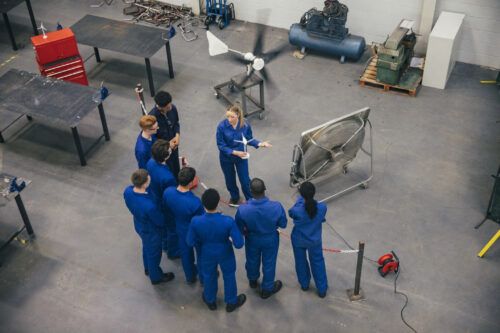Duties and responsibilities
As a lecturer, your duties could include:
- Teaching groups of students in a lecture, seminar or classroom setting
- Writing lesson plans and schemes of work
- Continual assessment and monitoring of student’s work
- Preparing resources and materials for sessions
- Record keeping and other administration
- Providing pastoral support for your students via one to one sessions and on an ad hoc basis
- Liaising with colleagues and managers
- Being the public face of the organisation at open days and parents’ evenings
- Interviewing and inducting new students
- Supervising learning activities outside of the college, such as field trips
- Researching and maintaining knowledge of educational policy, learning theory and subject specific developments
- Overseeing assessment activities and exams
- Partaking in ongoing course evaluation exercises
- Managing your time and working to deadlines as per the yearly cycle
Tasks may vary depending on your subject and the setting in which you teach.
Hours and conditions
Lecturers may be employed on a full time, part time (fractional) or sessional basis. Fractional workers are often paid a salary, whereas sessional workers are paid an hourly rate.
There are a range of full and part-time opportunities. In recent times there has been a trend towards fixed term contracts, although permanent positions are still available.
Full-time lecturers are contracted to work around 37 hours a week, with 24 of those spent teaching.
In an FE college you may be entitled to roughly seven weeks’ annual leave, to be taken out of term time. Some sixth form colleges, especially those attached to a school offer term time working, meaning you could be entitled to 13 weeks’ holiday.
As a starting salary you may earn between £21,000 – 24,000 for a full-time role, increasing incrementally as you gain experience and enhance your skills.
Qualifications and training
In most cases you’ll need a minimum of a level 3 qualification in the subject you want to teach. Some institutions require a degree.
There are a range of qualifications and training routes, depending on your preference. In general you can complete a one year full time Level 5 Diploma in Education and Training, plus an add-on specialist qualification if you choose to teach English (literacy), maths (numeracy) or English for Speakers of Other Languages (ESOL). These courses are offered at a range of FE and Higher Education (HE) establishments, so ask locally to see what’s on offer.
If you want to study on a more part-time basis, you can begin with the Level 3 Award in Education and Training and Level 4 Certificate in Education and Training, after which you may be able to find opportunities as an ‘associate’ lecturer. It would then be possible to complete your full qualification in post. The levels 3 and 4 both include a practical element and you may need access to teaching hours, which can be done on a voluntary basis.
Professional status and progression
As a student teacher you’ll be able to join the Society for Education and Training, a professional body in this sector. Once qualified, you can invest in CPD activities with the aim of achieving Qualified Teacher Learning and Skills (QTLS). This will enable you to progress in your field, and potentially move into other areas of education, such as secondary teaching. Other pathways include becoming a departmental Team Leader, Head of Department or a member of the Senior Management Team. These roles may take you away from teaching and into educational policy and strategy.





Leave a Reply